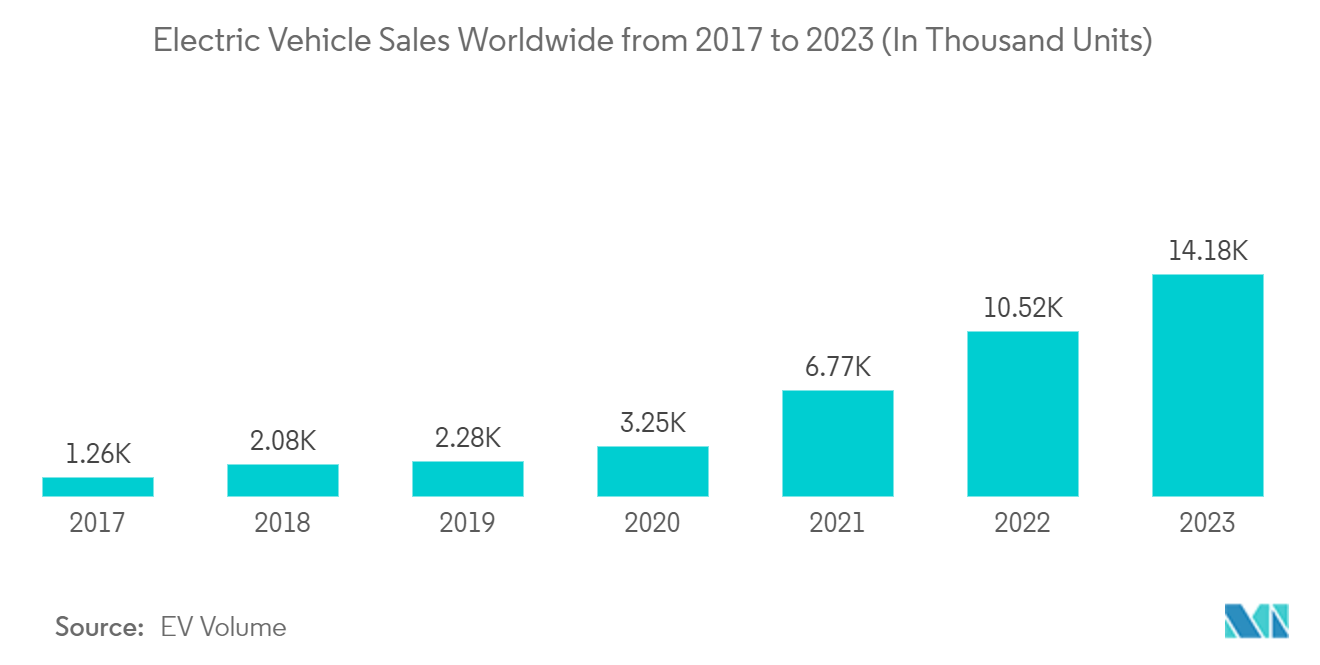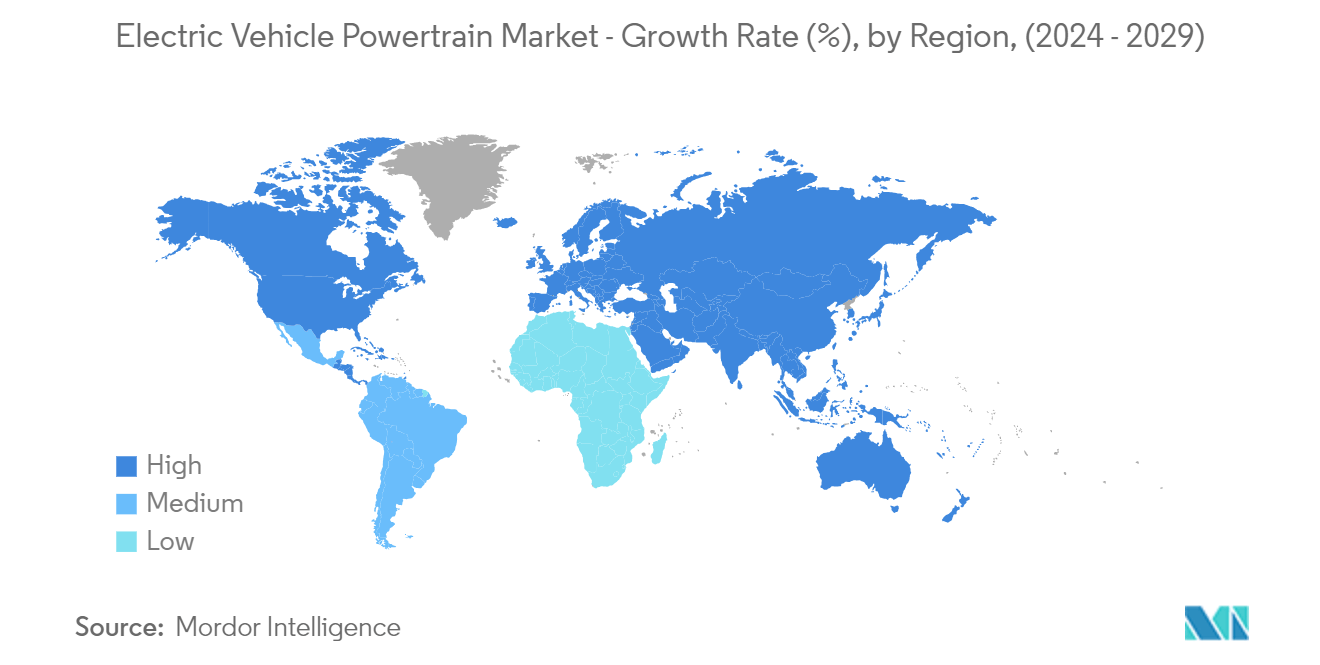Market Trends of Electric Vehicle Powertrain Industry
Increasing Sales of Battery Electric Vehicles is Driving the Market's Growth
In 2023, global electric car sales reached a remarkable 3.5 million units higher than the previous year, marking a substantial 35% Y-o-Y increase. This surge in sales highlights the accelerating shift toward electric mobility, influenced by several key factors. Notably, this figure is more than six times higher than the sales recorded in 2018, underscoring the rapid adoption of electric vehicles over the past five years. The significant growth trajectory can be attributed to technological advancements, government incentives, and changing consumer preferences.
The primary driver behind the increasing sales of BEVs is the continuous advancement in battery technology. Innovations in battery chemistry and manufacturing processes have significantly improved energy density, charging speed, and overall performance. These advancements have made BEVs more appealing to consumers by addressing concerns related to range anxiety and charging times. Moreover, the cost of lithium-ion batteries has been steadily declining, making electric vehicles more affordable and competitive with traditional internal combustion engine vehicles.
The increasing sales of BEVs are directly driving the growth of the electric vehicle powertrain market. Powertrain, which includes components such as the battery, electric motor, power electronics, and transmission, is a crucial element of an electric vehicle. As sales of electric vehicles rise, the demand for these powertrain components also increases, leading to market expansion. Manufacturers are focusing on enhancing the efficiency and performance of powertrain systems to meet the increasing demand and stay competitive.
Furthermore, the automotive industry is witnessing a shift toward developing advanced powertrain technologies. Companies invest in research and development to innovate and improve electric powertrain systems.
For instance, in July 2023, Volvo Trucks Malaysia introduced the region's first fully electric Heavy Duty Prime Mover. The Volvo FH Electric, FM Electric, and FMX Electric models are powered by an electric powertrain with two or three motors producing up to 490 kW and 2,400 Nm of torque depending on the application, and battery capacity ranging from 180 kWh to 540 kWh from two to six battery packs, claiming up to 300 km of travel range on a single full charge at 44 tons gross combination weight (GCW).

Asia-Pacific is Expected to Dominate the Market
Asia-Pacific is at the forefront of the electric vehicle (EV) powertrain market, outpacing other regions in terms of production, adoption, and technological advancement.
Asia-Pacific's leadership in the EV powertrain market is aggressive with governmental policies and initiatives promoting electric mobility. Countries such as China, Japan, and South Korea have implemented a series of incentives, subsidies, and regulations to encourage the adoption of electric vehicles. For instance, the Chinese Government offers substantial subsidies for EV purchases, mandates EV production quotas for automakers, and supports the development of charging infrastructure. These policies have significantly boosted the market for electric vehicles and, by extension, the powertrain components that drive them.
China, in particular, is a powerhouse in the EV market. The country is home to some of the largest EV manufacturers globally, such as BYD, NIO, and Xpeng Motors, which contribute significantly to the production and sales of electric vehicles. The presence of these manufacturers has established a robust supply chain for electric vehicle powertrain components, including batteries, motors, and power electronics. This localized production capability reduces costs and enhances the competitiveness of Chinese EV manufacturers on the global stage.
Furthermore, Asia-Pacific benefits from advanced manufacturing capabilities and technological expertise. Japan and South Korea are leaders in battery technology, with companies like Panasonic, LG Chem, and Samsung SDI driving innovations in lithium-ion battery production. These companies supply high-quality batteries to EV manufacturers across the world, ensuring the reliability and performance of electric vehicle powertrains. The continuous improvement in battery technology, including increased energy density and reduced costs, has been a critical factor in the growing adoption of electric vehicles.
Another factor contributing to Asia-Pacific's dominance is the increasing consumer demand for electric vehicles. The rising awareness of environmental issues, the growing urbanization, and the need to reduce air pollution have led to a surge in demand for cleaner transportation options. Consumers in major cities across China, Japan, and South Korea are increasingly opting for electric vehicles, driven by both environmental concerns and the availability of government incentives.
As the global market for electric vehicles continues to grow, Asia-Pacific is expected to maintain its leadership position, driving further advancements in EV powertrain technologies and shaping the future of electric mobility.



